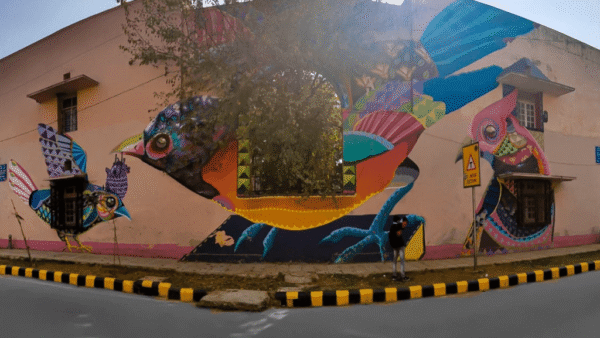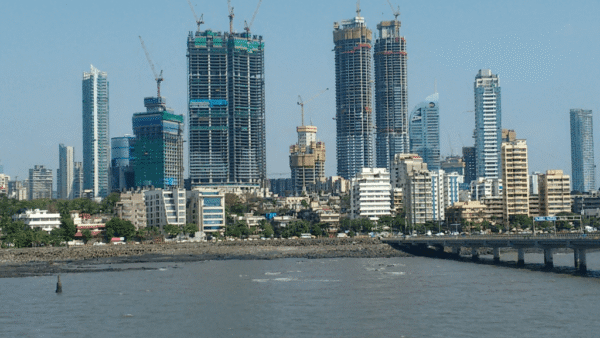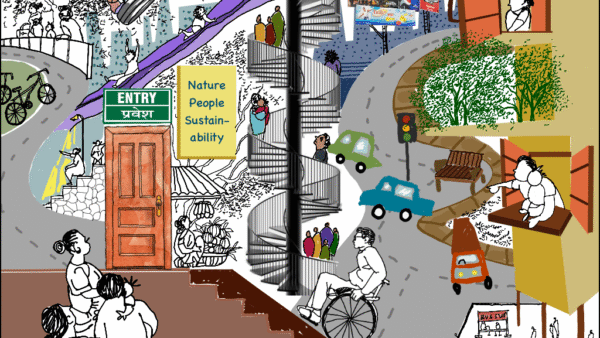Memories of the unprecedented landslide that struck northern Wayanad last July refuse to fade but about 22 kilometres from the incident site, in a region of rough terrain and a defunct tea plantation, the rebuilding is in swing. Two new townships, one on 58.5 hectares of the Nedumbala Estate in Kottapadi and another on 49 hectares of the Elstone Estate in Kalpetta, were approved by the Kerala cabinet and given the go-ahead by the Kerala High Court despite disputes about land acquisition brought to it. Nine months after the disaster, construction began at the Elstone Estate when chief minister Pinarayi Vijayan laid the foundation stone here on March 28.
How to build – or rebuild – townships and communities where a massive landslide flattened everything is a saga that’s currently being written in Kerala and it raises a number of issues about the affected people and places. The landslide, in the early hours of July 29-30 last year, resulted in the loss of more than 490 lives with another 100 missing, and wiped out entire communities in the picturesque hills of Chooralmala, Mundakai, and Punchirimattom in northern Wayanad. Fingers were pointed at the rush of construction in these areas and haphazard cutting of the hills to accommodate hotels, resorts, roads, recreation facilities to cater to the burgeoning tourism.
Whatever the grain of truth in it, the rebuilding of these areas of Wayanad should not have been business-as-usual. Instead, it should have been ecologically sound, factoring in the natural slopes and carrying capacity of the region, and making the exercise nature-led or nature-based. And it should have had people’s participation every step of the way. It is of concern that the lessons of last year’s tragedy have not been learned by the local administration or the state government.[1] Rebuilding and resettlement plans have been top-down from the state government that do not explicitly consider ecological features, they have not met with people’s expectations, and have been beset by political tensions between the centre-state over finances. In this sense, the building or rebuilding of Wayanad is an opportunity lost to demonstrate a more people-oriented and nature-led development.
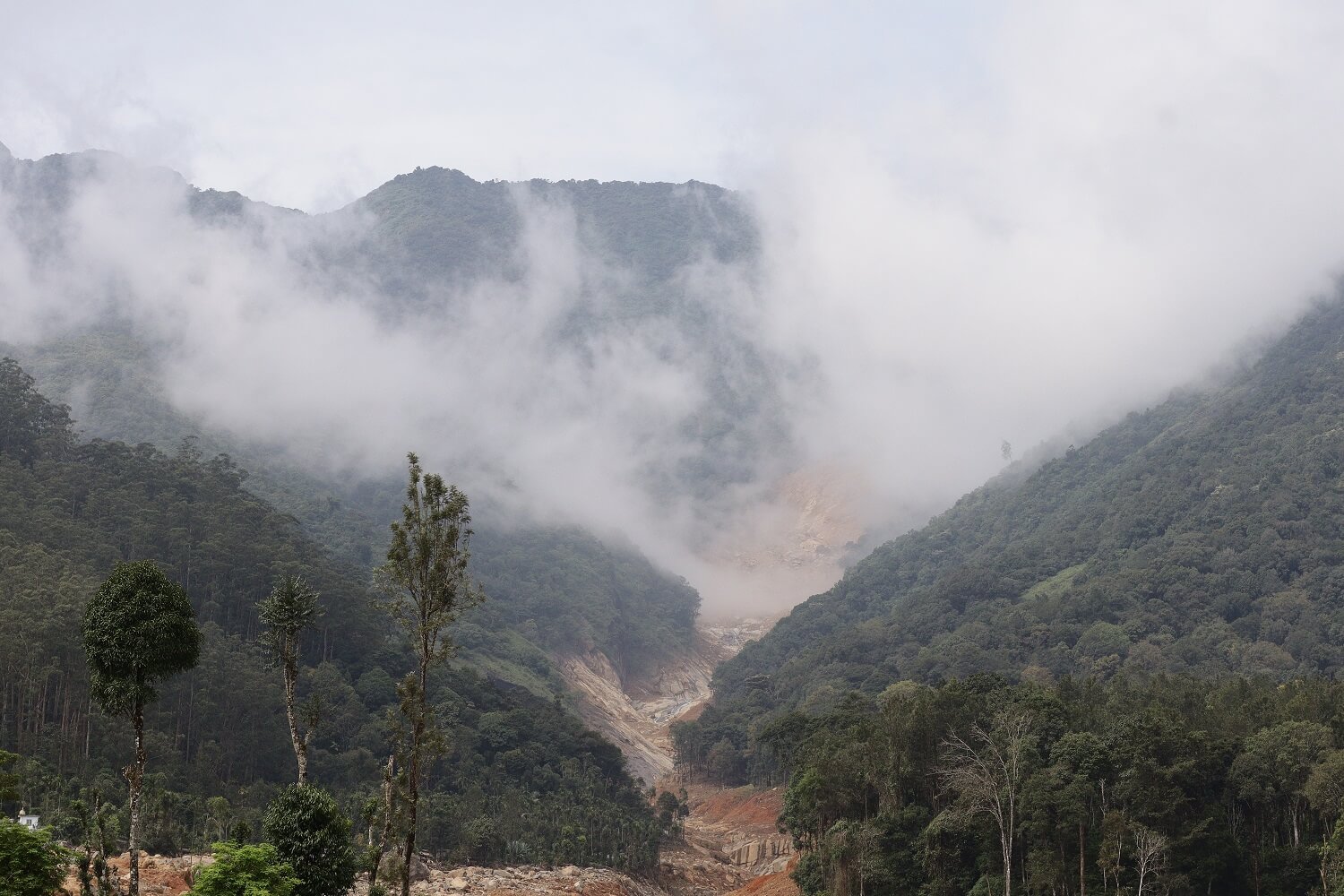
Townships as rebuilding
The land for the two townships planned in Kalpetta and Meppadi was chosen for rehabilitation within two months of the landslide and construction would have been partly done by now but for the court cases. Some of the owners approached the High Court challenging the government’s right to take their land; it took months for the court to adjudicate the cases.
A township, according to the plan, will have houses of 1,000 square feet each with a living and dining area, two bedrooms, an attached bathroom, kitchen, work area, sit-out and a study room. It will have facilities such as a school, community hall, health centre, and recreation club. Each house will be situated on seven cents (a unit of land measurement commonly used in south India, and equal to nearly 40.5 square metres) of prime land. These tea estates are urbanising in the process but without environmental concerns that should have been adopted. The construction of the Kalpetta township will be completed by the end of March 2026 and will serve as a world model of rehabilitation, said K. Rajan, state’s revenue minister, to Question of Cities.
In all, the government has identified 402 families to be rehabilitated either by giving them 1,000 square feet houses, each costing about Rs 30 lakh, in the townships or by settling them outside the townships with a compensation payoff of Rs 15 lakh. Of this, 398 families are on the first list of claimants and 289 of them have opted to receive houses. The remaining 109 have preferred to settle outside the townships using government allocations and the compensatory payoff. Almost all the survivors are agricultural workers or plantation labourers who traditionally did not have land but have no experience of living in an urbanised setting either.
At the foundation stone ceremony, Chief Minister Vijayan was accompanied by his cabinet colleagues and ruling CPI(M) leaders as well as opposition Congress leaders including MP Priyanka Gandhi and leader V.D. Satheesan. They were frustrated with the central government’s rejection of Kerala’s request for Rs 2,000 crore as central aid for complete rehabilitation; the centre had only loaned Rs 529.5 crore. “If the people are with us, nothing is impossible. We will survive. That is the message of the ongoing work,” said a defiant Vijayan.
Aid is trickling in from other sources. Karnataka Chief Minister Siddaramaiah had sent Vijayan Rs 20 crore for 100 houses, the Democratic Youth Federation of India contributed for another 100 houses, National Service Scheme students collected and donated Rs 10 crore, former MP Rahul Gandhi and several industrial and business groups also promised funds. A Memorandum of Understanding has been signed with the well-known Uralungal Labour Contract Cooperative Society for construction and a website has been launched to provide updates. Also, each sponsor will receive a unique ID to track their contributions.
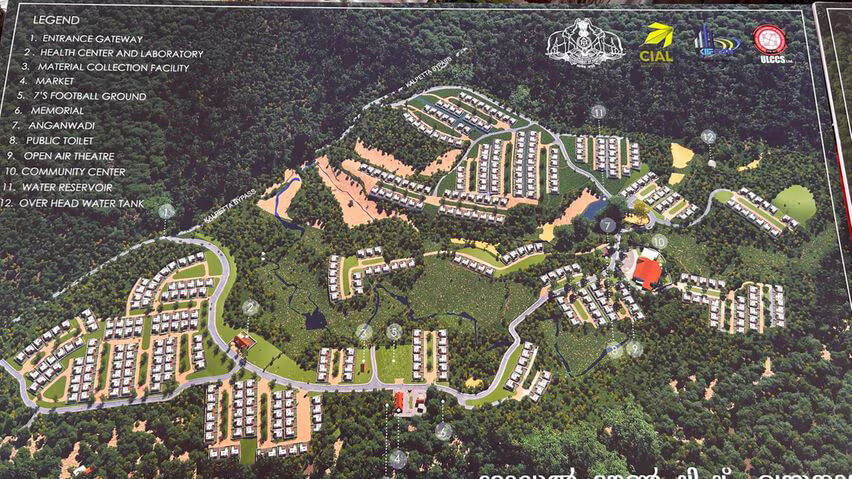
People as ‘beneficiaries’
Building townships can hardly bring back the thriving communities that existed and the state government is facing challenges on this count. In Chooralmala, the landslide destroyed the owners of 53 shops and establishments. With tourism banned and no residents, they have lost their livelihoods. The rehabilitation does not address this. “Before the disaster, finding a place to park a bike here was nearly impossible. It was thriving. I was living off the rent from my three-storey building,” recalled Muhammed Shafi, a shop owner. He has taken to selling tender coconuts and pickled vegetables at a corner in Kalpetta, and struggles to support his family. The shop owners say they have submitted several memorandums to the government but have not received a response.
People who tilled land around their houses are dissatisfied because the planned townships offer them little. Thahira Chand Muhammed, a survivor, told me that at least 30 cents of cultivable land is necessary for each affected family to rebuild their lives. The families have been receiving a monthly rent of Rs 6,000 each and a daily allowance of Rs 300 which will be stopped after they are allotted houses in the townships.
This drives home the point that mere construction or building to plans is hardly enough for people. “Those who opted for the township seem fortunate as they will have prime land in a municipal area but those who had reservations about the township project will receive less. The township addresses housing concerns while entirely ignoring livelihood issues. With no agricultural or other income sources, how can they survive in an urban area,” asks Wayanad-based activist and writer O.K. Johnny.
There is also growing opposition to government-imposed restrictions which include a 12-year moratorium on selling or transferring allocated houses and land. Activists have also expressed concerns about offering a choice between Rs 15 lakh financial assistance or a house worth Rs 20 lakh on a 7-cent plot. And the crux seems to be the old perspective of seeing the affected victims of a natural disaster only as ‘beneficiaries’ of rehabilitation and building plans; there is hardly any awareness or willingness to take them on board at the planning stage to make the process more democratic or people-sensitive. The design of rebuilt houses and other facilities in the townships has not been discussed with the survivors. “Their priorities were ignored. The houses that will be built are a unilateral imposition,” said environmental activist Sridhar Radhakrishnan.
The lack of consultation with people has also meant that many survivors now distrust the government, claiming it repeatedly changed its word. “The government initially promised us 10 cents of land, but now it’s giving only 7 cents. “We collectively owe Rs 22 crore in debt to banks which have agreed to waive Rs seven crore interest but the government has offered no help with the principal,” stated Shajimon in Chooralmala, convener of the Janasabdam Action Council for survivors. They point out that the government received Rs 723 crore in the Chief Minister’s Distress Relief Fund after the disaster. Even if it raised the payout per family to Rs 35-40 lakh, it would spend only Rs 400-450 crore “whereas it will be paying Rs 755 crore to a construction company which will not significantly benefit Wayanad’s economy,” Shajimon stated.
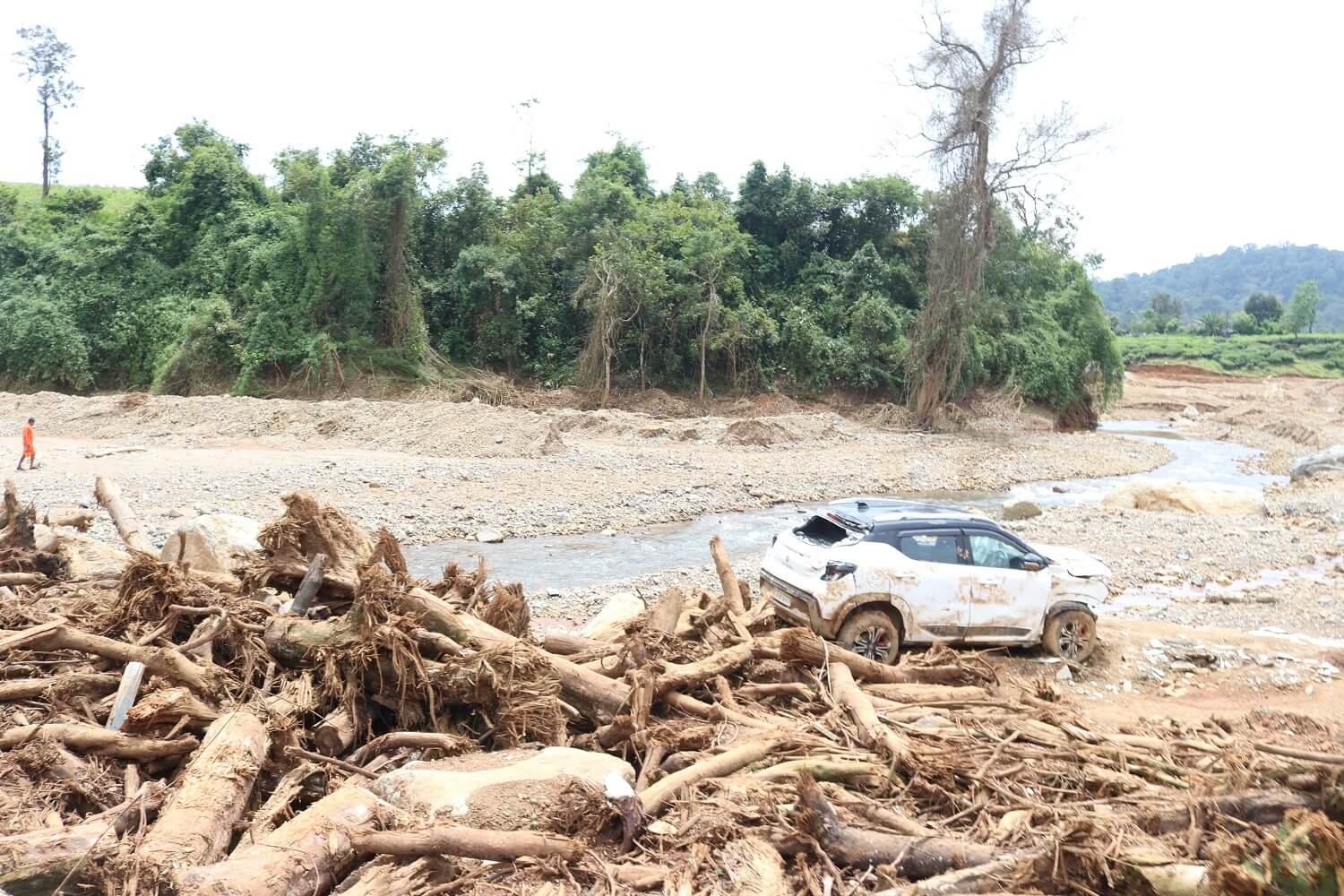
The rebuilding plans do not budget in the losses that people suffered including of their leased property, commercial enterprises, vehicles including auto-rickshaws and jeeps which used to ply as taxis. Or the damaged tea and cardamom estates – where many labourers died in temporary shelters – or the 310 hectares of farmland. The landslide destroyed, in all, nearly 2,000 dwellings and over 100 other structures. There’s a lot of building/rebuilding to be done but the affected have no way to pay back outstanding loans.
Of the 21 orphaned, only one has received a job offer, said Samshad Marakkar, head of the Wayanad district panchayat. Nissar Ahamed, from Punchirimattom who lost seven family members and could not retrieve three of the bodies, had 1.10 acres land with coffee and peppercorn crops on a loan of Rs seven lakh from the Kerala State Financial Enterprises (KSFE); he is an emotional and financial wreck. PV Azeez, farmer in Mundakkai with 1.5 acres of coffee, cardamom, and pepper crops, returned from a wedding to the landslide; he owes the Chooralmala branch of Kerala Gramin Bank Rs 1.4 lakh as crop loan and Rs 2.5 lakh as gold loan. “I am uncertain how I will repay,” he said. Though a one-year moratorium on loans was announced, survivors are worried, especially as the rebuilding plans have not accounted for their livelihoods.
The ecological question
Survivors, or beneficiaries as the government labels them, point out also to the other construction in the affected areas, especially the state government’s initiative to reconstruct highways and bridges. No one is sure if the environment impact assessment has been carried out of the newly planned buildings and constructions or if the extreme case of natural calamity, like a landslide, has been taken into account.
Chooralmala, Mundakai, and Punchirimattom, once-thriving tourist spots, have been ghost towns since the landslide. Nature itself seems to have stagnated here with mud and boulders forming the landscape. This monotonous brown stretch bereft of vegetation used to be lush green till that fateful night. Devastated houses, broken household objects, iron bars and concrete fragments are everywhere. Elephants frequently wander, that’s about all. The few who dare to come visiting, like K Vipin Das whose four family members were buried alive, find the silence unbearable. These areas are now like memorials.
“Many people are buried deep, this is a mausoleum for our families,” said survivor Madathil Vijayan, who like many is against the idea of rebuilding the tourism facilities here. Local communities recently submitted a memorandum to Chief Minister Vijayan urging him to not open the areas to tourists which will mean more construction. Relentless tourism propped up the economy in these hills of Wayanad but also led to rampant construction with little or no thought to the region’s ecology. In the rebuilding plans, roads and other infrastructure in the affected areas pose a similar concern, locals said.
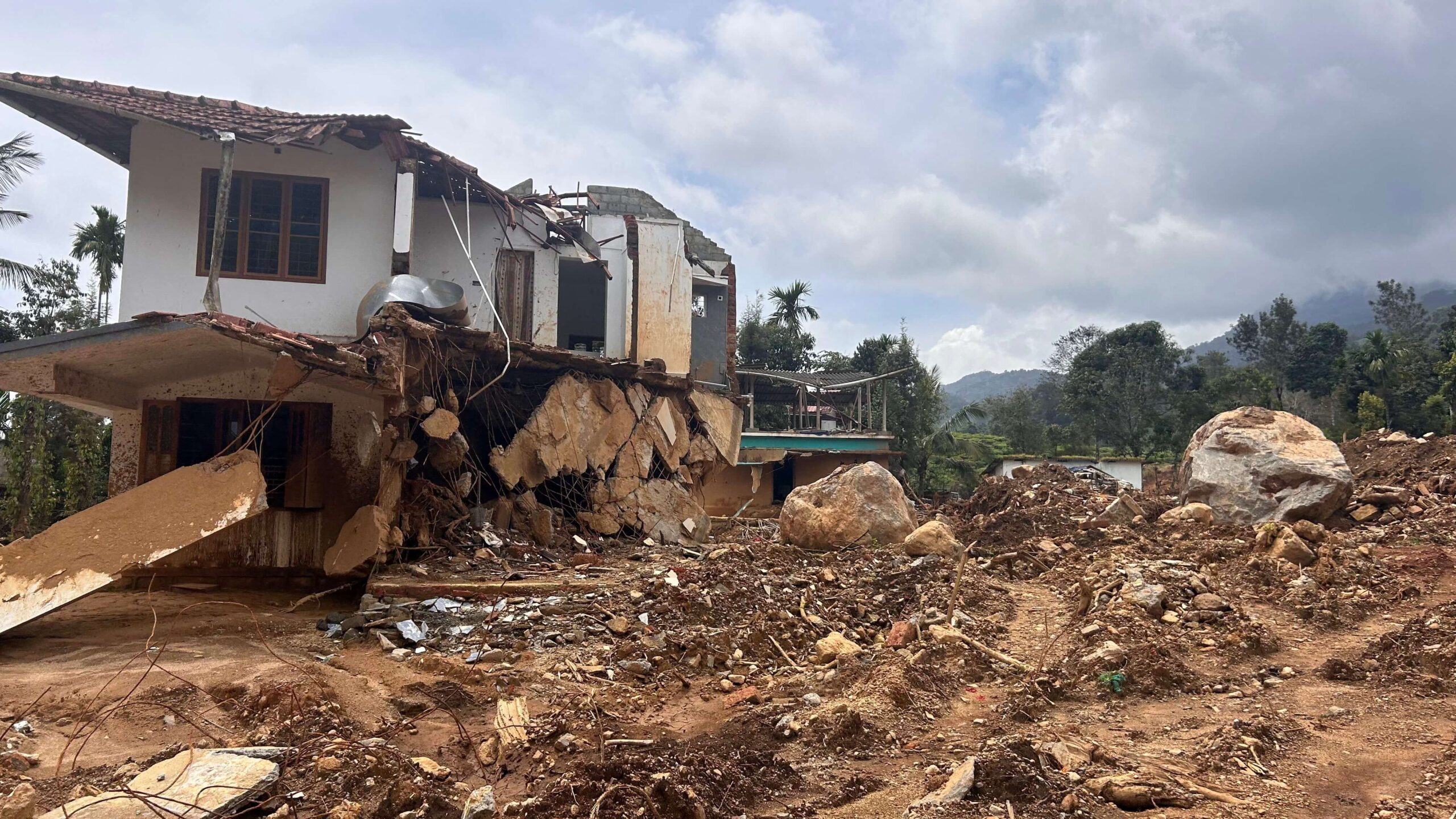
Revenue minister Rajan stated that roads proposed to be constructed in Chooralmala and Mundakai would use about Rs 48 crore from the funds received from the centre but their design would be a municipal initiative. The environmental NGO Wayanad Prakrithi Samrakshana Samithi has strongly protested on the grounds that the road network would be catastrophic and that the road to Punchirimattom, the epicentre of the landslide, could result in future calamities. Activists alleged that contracts for building roads and bridges, and for cleaning the Punnapuzha River, were being awarded with alacrity while the construction of townships was progressing slower. Minister Rajan’s assertion that the roads network was essential for agriculture and land conservation was termed preposterous by survivors. Only one three-member tribal family remains in Punchirimattam, refusing to relocate from their ancestral dwelling.
The identified estates for rebuilding have no great ecological significance, claims the state government, and officials assert that the construction involves a green protocol. The government says it will undertake environmentally responsible and resource-efficient construction practices which would mean saving of resources to the maximum extent, including energy saving, land saving, water saving, material saving), and sustainable construction methods with renewable and recyclable materials so that the rebuilt houses and infrastructure like roads and power grids will withstand landslides and other natural calamities. But no one is giving guarantees.
One aspect has eluded the plans and planners – that the roads network and other infrastructure will bring back the tourists, including the curious who indulge in disaster tourism. However, the Wayanad experience of the past nine months, unfortunately, has not recalibrated the state’s approach to make development more nature-based or a review of development plans in other parts of Kerala – this is probably the most regretful takeaway from the building/rebuilding of Wayanad.
KA Shaji is a south India-based developmental journalist specialising in environment and climate change. He regularly writes for The Guardian, Hindustan Times, Mongabay, and Down to Earth, covering topics such as politics, social inclusion, rural development, Dalits, tribals, art, and culture. A postgraduate in Journalism and Mass Communications, Shaji is the recipient of National Media Fellowship from the National Foundation for India for Excellence in Journalism and has also been honoured with Sanskriti National Journalism Award for a series of articles on the agrarian crisis in Wayanad.
Photos: KA Shaji


